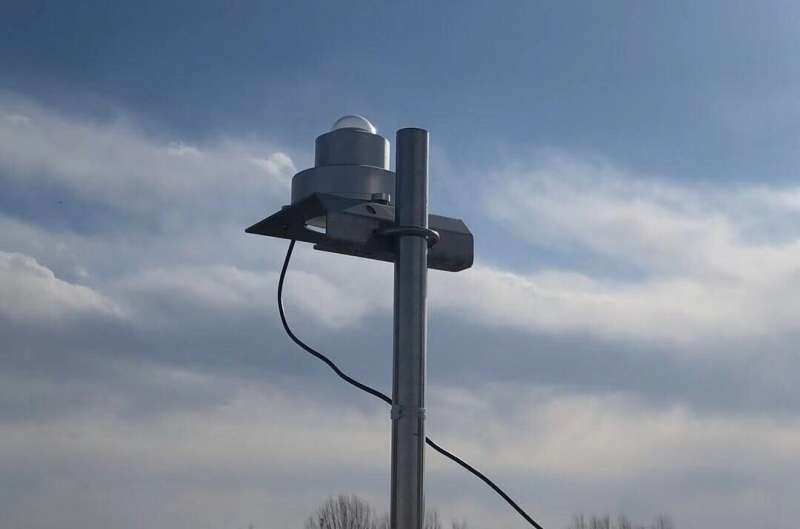Clear-sky detection methods in a highly polluted region still need further improvements

In research on solar energy and climatology, 'clear sky' or 'cloudless' conditions are very important. For instance, the number of clear-sky days (number of days having an average cloud cover less than 10%) is a key parameter of solar resource assessments. The instantaneous surface irradiance is highly affected by cloud variations, based on which clear-sky detection (CSD) methods can be developed. However, a general tendency in common among all CSD methods is the detection accuracy deteriorates when aerosol loading increases.
"The lack of accurate clear-sky detection data makes it difficult to assess existing clear-sky detection methods in polluted areas," explains Liu Mengqi, a Ph.D. student from the group of Prof. Xiang'ao Xia at the Institute of Atmospheric Physics, Chinese Academy of Sciences, China, and also the first author of a paper recently published in Atmospheric and Oceanic Science Letters.
Prof. Xia and his team evaluated 21 CSD methods by using five years of 1-min surface irradiance and visually inspected total-sky imager data at Xianghe—a heavily polluted station on the North China Plain.
According to the research of Prof. Xia, CSD methods with higher cloudy-sky detection accuracy rates produce lower clear-sky accuracy rates, and vice versa. Moreover, when aerosol loading increases, the CSD accuracy rate decreases significantly.
"Our results provide scientific guidance to existing clear-sky detection methods that are currently not applicable in polluted conditions," says Prof. Xia. "In the future, this will give us the opportunity not only to improve existing methods, but also hopefully to propose a new clear-sky detection method."
More information: Menqing Liu et al, Evaluation of multiple surface irradiance-based clear sky detection methods at Xianghe—A heavy polluted site on the North China Plain, Atmospheric and Oceanic Science Letters (2020). DOI: 10.1016/j.aosl.2020.100016
Provided by Chinese Academy of Sciences



















